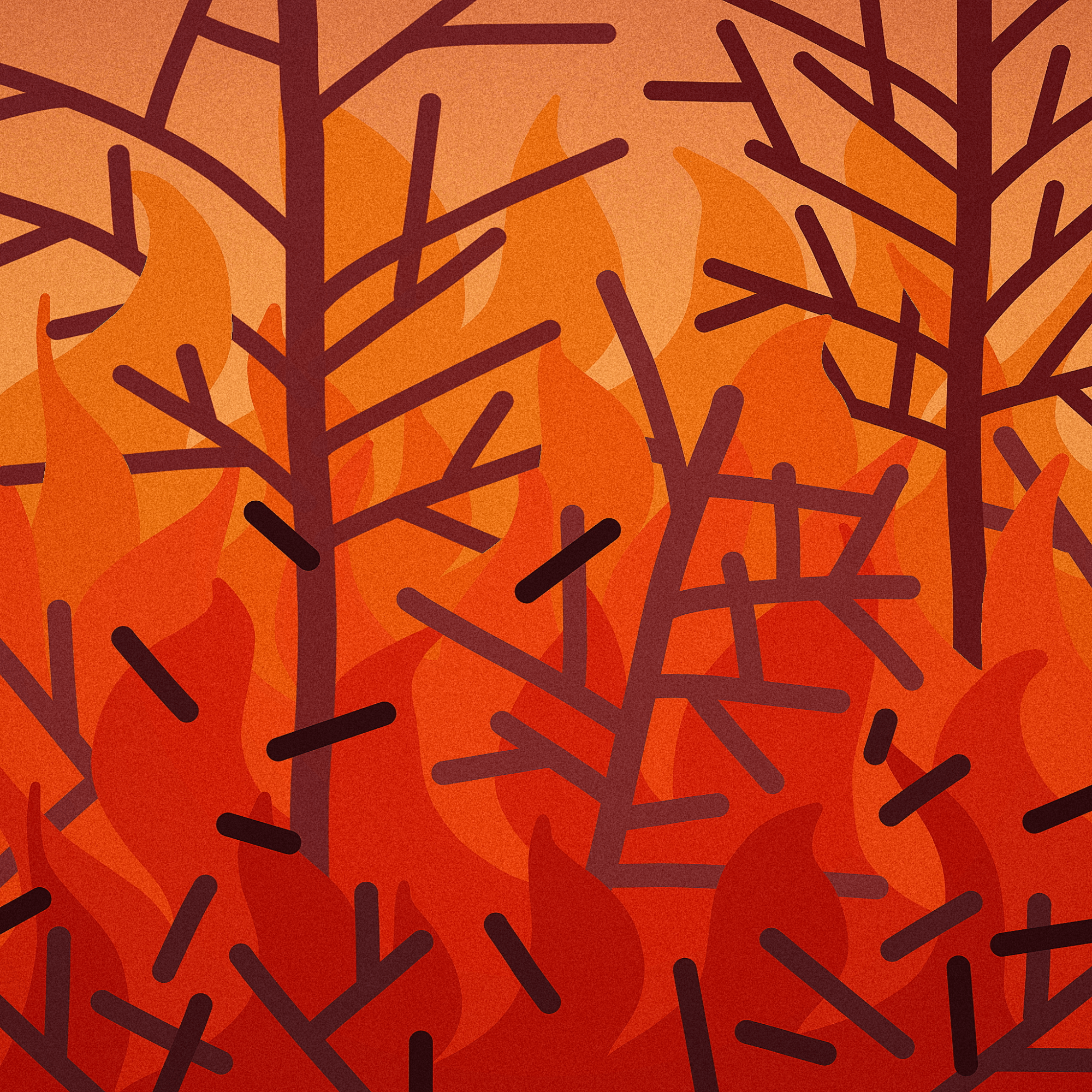
Sophia Zhao, Staff Illustrator
West Coast wildfires have caused dozens of deaths, produced billions of dollars in property damage and permanently destroyed communities. The massive increase in uncontrolled wildfires is due to both climate change and forest mismanagement — under a fire suppression policy spearheaded by Yale graduates in the 1900s.
Fearing the destruction of wildfires, the federal government promulgated an extreme policy of fire suppression in the 1900s. Many of those involved in this policy formation were Yale School of the Environment graduates who believed forests were unsullied by humanity. They aimed to protect the lands at all costs from both humans, such as loggers, and natural events, such as fires. Without those idealistic men, many national parks would not exist and American wild land would have been lost.
However, wildfires are a natural part of some forests’ ecosystems. Since the fire suppression policy was created, forests have not been able to naturally de-densify, species that have relied on fire to exist have become endangered, and the risk of large fires has skyrocketed.
“As people who work in science, it’s our responsibility to appreciate the accomplishments of our predecessors while also challenging some of the decisions that they made and how they influence today,” said James Puerini ENV ’21, former firefighter and current forestry student at the Yale School of the Environment.
UC Berkeley Professor of Forest Ecology John Battles explained that before the federal government took control of western lands, Native American tribes either set wildfires, called prescribed fires, or managed existing ones. Prescribed and managed fires benefited forests for many reasons, including managing the growth of certain species, restoring natural habitats and herding animals.
In the late 1800s, thousands of white Americans began moving west. They then purchased and occupied huge tracts of land in this area. Timber interests, developers and others began clear-cutting land.
“Teddy Roosevelt establishes the system of public lands as it exists today,” Puerini said. “The result is millions of acres of public land they claim would be managed and preserved in perpetuity. The main reason they said they did this was because there was concern about uncontrolled timber harvesting and development. It was controversial. So, they passed these laws, and established the public lands systems and agencies, and Teddy Roosevelt instated his personal confidante Gifford Pinchot.”
Gifford Pinchot, class of 1889, studied forestry in France and idealized the wide-open western landscape. His interests led to his family creating the Yale Forest School, now the Yale School of the Environment, which was the first American school to offer postgraduate training in forestry.
Pinchot was also a eugenicist and often dismissed indigenous strategies of living with the land, according to a recent New Yorker article on Pinchot and other environmentalists of the time.
As chief of the US Forest Service, Pinchot protected millions of acres of land from private development. Forestry graduates moved west to manage fires under his direction. Despite some of the good those foresters did, they failed to realize that fires are necessary for western forests. The East Coast transplants had learned forest management techniques from Europe, where trees do not rely on fires like those on the West Coast do.
“Some pine species need fire as part of their life cycle,” Battles said.
Policies around fire suppression continued unquestioned until the 1960s, when scientists learned that fire, like heavy rains, is a natural part of a forest’s cycle, as opposed to a natural disaster like an earthquake. Aldo Leopold, who graduated from the Yale Forest School in 1909, created the seminal Leopold Report advocating science-based instead of protection-based National Parks policy. This led to laws protecting wolves, allowing hunting permits to control elk populations and allowing wildfires to naturally burn and put themselves out. Yet communities near forests feared uncontrolled fires and smoky air.
By the 1990s, West Coast forests had built up excess fuel since no small fires burned out the underbrush. Many scientists had to admit that partnerships with private timber companies were necessary. The removal of large swaths of forests near towns create buffer zones to ensure that fires die out before they can threaten people’s homes.
Professor Chad Oliver, who is now the Pinchot Professor of Forestry and Environmental Studies and the director of Yale‘s Global Institute of Sustainable Forestry, attended multiple congressional hearings in the 1990s, advocating for an increase in forest management. He recalls that even then, scientists knew that forests in the American West were headed toward disastrous fire seasons, but he struggled to convince congresspeople that increased forest management was necessary. He believes more forest management should have occurred.
“I keep asking myself, is there something I could have done differently?” Oliver said. “If they had only listened to the science, none of this would have happened.”
Wildfires now rage uncontrollably on the West Coast amid a prolonged dry season with increased lightning storms primarily caused by climate change. The Yale School of the Environment continues to actively research climate change and wildfire management. Even if human emissions of greenhouse gases decrease, it will be a long time before forests return to a stable ecosystem.
For now, scientists say that focusing on forest management is the most effective way to prevent wildfires. Until more money is spent to combat climate change and manage forests, firefighters risk their lives and health every year to save communities across the West.
Over five million acres have burned on the West Coast this year.
Annika Salmi | annika.salmi@yale.edu







